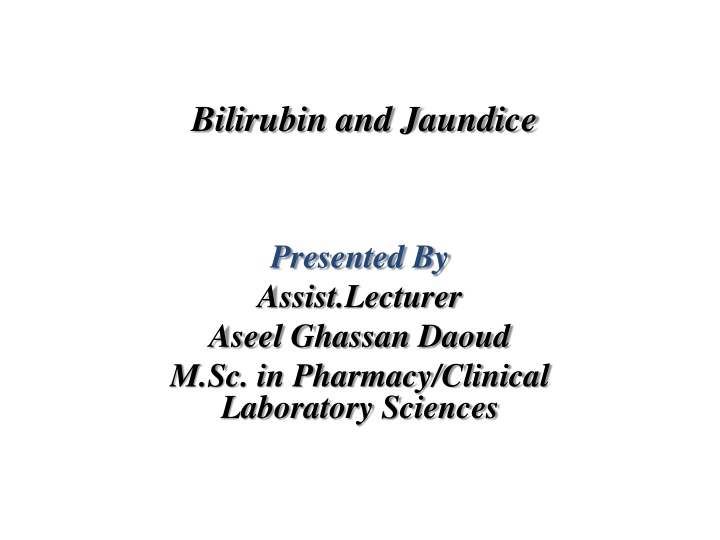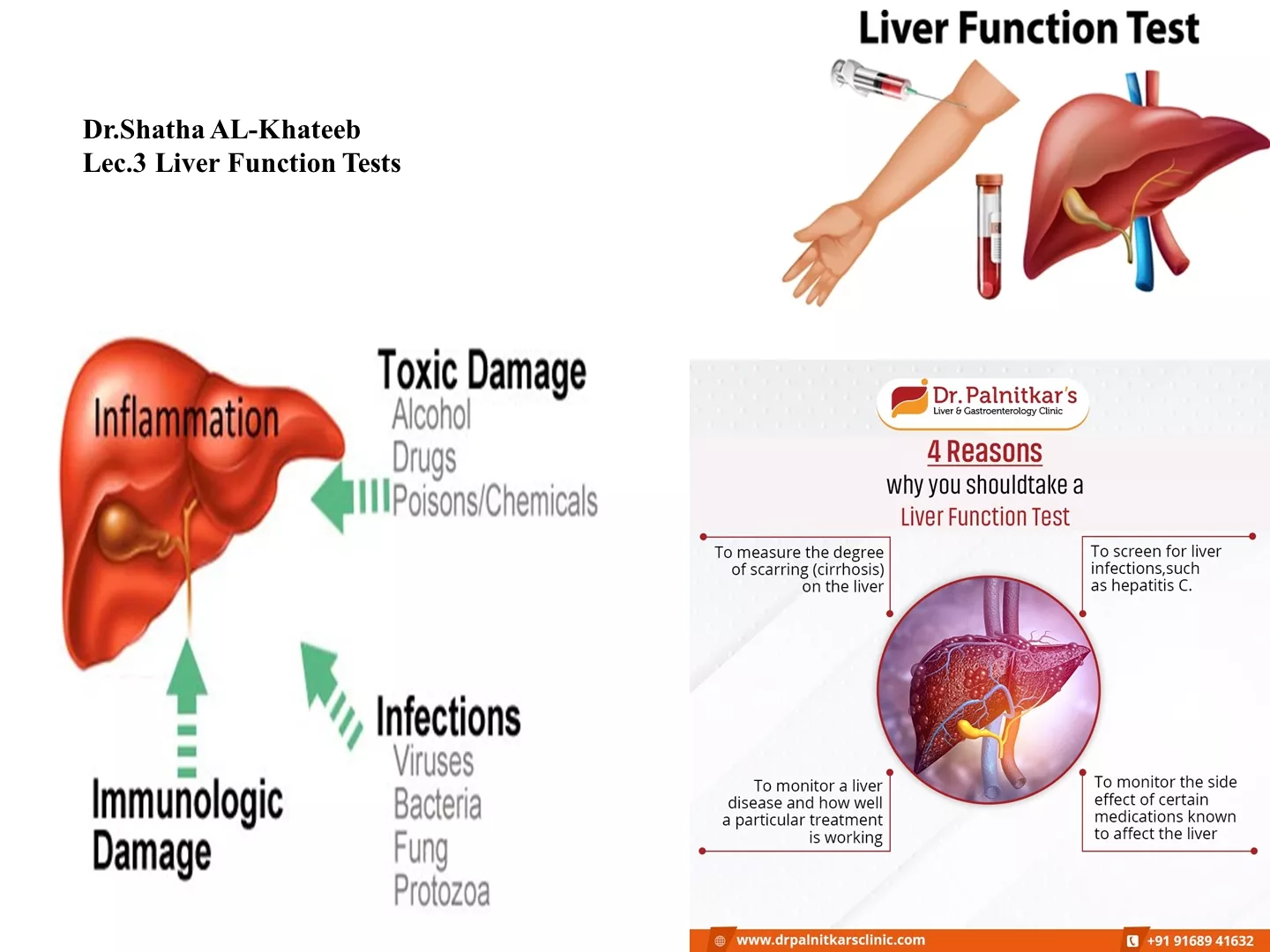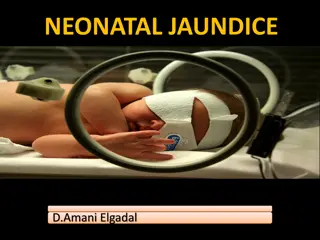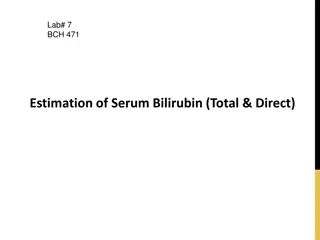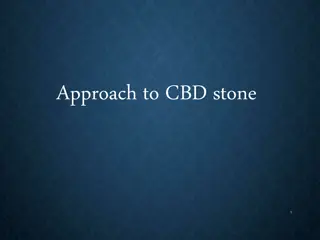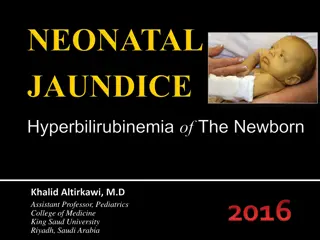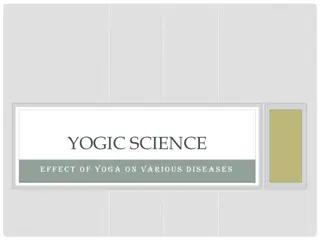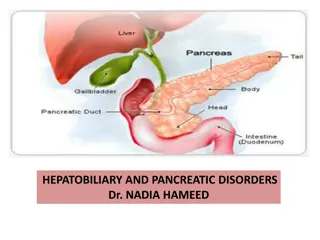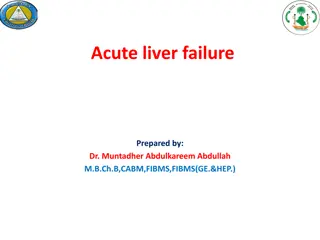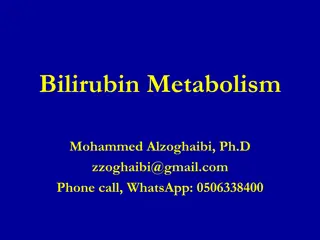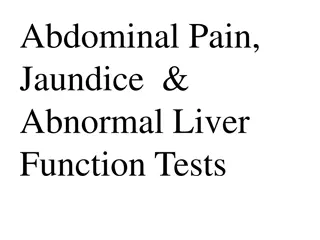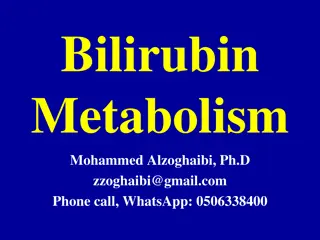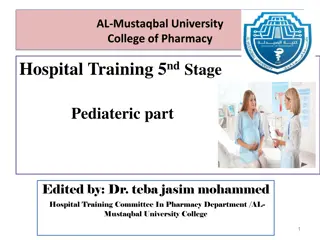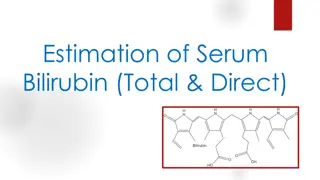Bilirubin and Jaundice
Bilirubin, a brownish-yellow substance found in bile, is produced during RBC breakdown. Jaundice, caused by high bilirubin, leads to skin pigmentation. Various types of jaundice include pre-hepatic, hepatocellular, and post-hepatic. Treatment options and benefits of bilirubin testing are discussed.
Download Presentation

Please find below an Image/Link to download the presentation.
The content on the website is provided AS IS for your information and personal use only. It may not be sold, licensed, or shared on other websites without obtaining consent from the author.If you encounter any issues during the download, it is possible that the publisher has removed the file from their server.
You are allowed to download the files provided on this website for personal or commercial use, subject to the condition that they are used lawfully. All files are the property of their respective owners.
The content on the website is provided AS IS for your information and personal use only. It may not be sold, licensed, or shared on other websites without obtaining consent from the author.
E N D
Presentation Transcript
Bilirubin and Jaundice Presented By Assist.Lecturer Aseel Ghassan Daoud M.Sc. in Pharmacy/Clinical Laboratory Sciences
What is bilirubin? It is a brownish yellow substance found in bile and it is produced during the breakdown of old RBCs then removed from the body through feces. How many forms of bilirubin are there? There are two forms: Conjugated (direct) bilirubin: water -soluble unconjugated (indirect) bilirubin: fat -soluble
What is jaundice? It is a yellowish pigmentation of skin and whites of the eye due to high serum bilirubin levels and may cause itchiness.
Pre-hepatic jaundice: It is caused by anything that causes increased hemolysis rate. thalassemia Crigler-Najjar Syndrom
There is increased production of urine urobilinogen with no bilirubin in urine. Hepatocellular jaundice: It can be caused by : Acute hepatitis Hepatotoxicity Alcoholic liver disease There will be increased levels of both conjugated and unconjugated bilirubin in blood In newborn it is called neonatal jaundice
Post-hepatic (obstructive) jaundice: It is caused by interruption to the bile drainage in the biliary system by: liver flukes The patient has pale stool and dark urine Itching may occur due to bile salts deposition
How can jaundice be treated? It can be treated by: Blood transfusion Phototherapy
What is the benefit of making bilirubin test? To check for liver function and signs of liver diseases To check for bile duct obstruction To diagnose any destruction in RBCs (hemolysis) To decide whether newborn babies with neonatal jaundice need treatment
Reference levels of bilirubin: > 5 days-60 years: TB (0.3-1.2) mg/dl DB (< 0.2) mg/dl 3-5 days: TB (1.5-12) mg/dl How can bilirubin be measured in labs? By measuring total bilirubin and direct bilirubin concentration in the blood using supplied kits then indirect bilirubin can be obtained by subtracting direct from total bilirubin concentration.
What are medicines that increase serum bilirubin? Antibiotics Birth control pills Diazepam Flourazepam
What are medicines that decrease serum bilirubin? Vitamin C Phenobarbital Theophylline
